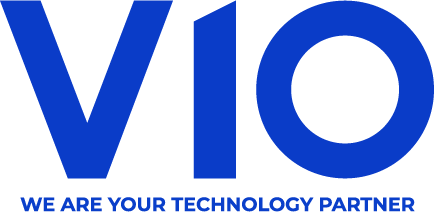
Unlocking Business Growth with Data-Driven Decision Making
Big Data has evolved from a buzzword to a fundamental business driver, revolutionizing industries across the globe. As we approach 2025, the landscape of data analytics is set to undergo significant transformations. Organizations that stay ahead of these trends will gain a competitive edge in an increasingly data-driven world. Let’s explore the key trends shaping the future of Big Data analytics in 2025.
1. AI-Powered Analytics: The Rise of Autonomous Decision-Making
Artificial Intelligence (AI) and Machine Learning (ML) will play a more prominent role in data analytics. AI-driven algorithms are becoming more sophisticated, enabling businesses to automate decision-making processes, detect patterns, and derive insights faster than ever. Expect to see a rise in autonomous analytics, where AI systems can analyze data and take actions without human intervention, reducing response time in critical business situations.
2. Real-Time Data Processing for Instant Insights
The demand for real-time analytics is surging, with businesses requiring immediate insights to stay ahead of the competition. Technologies like streaming data platforms (Apache Kafka, Spark Streaming, and Flink) are improving, allowing companies to process vast amounts of data instantly. In 2025, real-time analytics will be crucial for sectors like finance, healthcare, and retail, enabling them to react swiftly to market trends and operational challenges.
3. Data Democratization: Empowering Non-Technical Users
Businesses are increasingly focusing on making data analytics accessible to all employees, not just data scientists and IT teams. With the rise of no-code and low-code analytics platforms, non-technical users will be able to generate insights, build dashboards, and make data-driven decisions without extensive technical expertise. This shift will empower organizations to become truly data-driven at every level.
4. Privacy-First Data Strategies & Enhanced Compliance
With data privacy regulations tightening worldwide (such as GDPR, CCPA, and upcoming AI regulations), businesses must adopt privacy-first data strategies. By 2025, we will see more companies implementing privacy-enhancing technologies (PETs), such as differential privacy, homomorphic encryption, and federated learning, to ensure data security while maintaining analytical capabilities.
5. Cloud-Native & Hybrid Data Architectures
The cloud continues to dominate the data landscape, but hybrid data architectures—integrating on-premise and cloud solutions—are becoming the norm. Businesses are increasingly adopting multi-cloud strategies to enhance flexibility, avoid vendor lock-in, and optimize performance. Technologies like data fabric and data mesh will enable seamless integration across disparate data sources, ensuring better accessibility and governance.
6. Augmented Analytics: The Next Evolution
Augmented analytics leverages AI, ML, and Natural Language Processing (NLP) to automate data preparation, insight generation, and explanation. In 2025, AI-powered BI tools will provide advanced predictive and prescriptive analytics, helping businesses make more informed decisions effortlessly. Conversational analytics will also gain traction, allowing users to query data using natural language.
7. Edge Computing & IoT-Driven Big Data
As the Internet of Things (IoT) continues to expand, the volume of data generated at the edge is skyrocketing. To handle this surge, companies are adopting edge computing, which processes data closer to its source rather than relying solely on centralized cloud systems. This trend will be particularly impactful in industries like manufacturing, autonomous vehicles, healthcare, and smart cities, where real-time processing is critical.
8. Data Monetization & the Rise of Data Marketplaces
Data is no longer just a byproduct of business operations—it’s a valuable asset. Companies are increasingly monetizing their data through data marketplaces, where businesses can buy and sell data insights. In 2025, we will see a surge in data-as-a-service (DaaS) models, where organizations offer real-time, AI-enhanced data insights on demand.
9. Quantum Computing & Big Data Analytics
While still in its early stages, quantum computing is set to revolutionize data analytics by solving complex problems exponentially faster than traditional computers. In 2025, expect to see initial breakthroughs in quantum-enhanced machine learning (QML), enabling businesses to tackle previously unsolvable data challenges in fields like drug discovery, financial modeling, and cybersecurity.
10. Ethical AI & Responsible Data Use
As AI-driven analytics become more prevalent, ethical concerns surrounding bias, transparency, and accountability will take center stage. Organizations will need to implement explainable AI (XAI) frameworks, ensuring that AI-generated insights are fair, interpretable, and auditable. Ethical AI practices will become a key differentiator for businesses looking to maintain trust and regulatory compliance.
Conclusion: Preparing for the Future
Big Data analytics is on a transformative path, and businesses must adapt to stay competitive. By embracing AI-powered analytics, real-time data processing, privacy-first strategies, and ethical AI practices, companies can unlock new growth opportunities in 2025 and beyond.
At VIO, we specialize in helping businesses harness the power of Big Data, AI, and cloud technologies to drive smarter decision-making. Are you ready for the future of data analytics? Contact us today to explore how we can transform your data into actionable insights.







